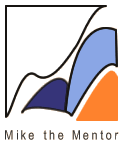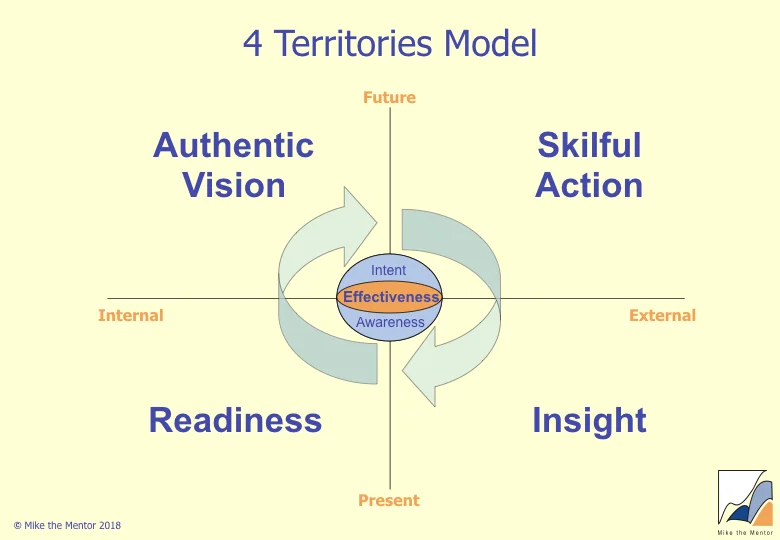Covert Processes - the Forces that Prevent Change
/Change is difficult is because we are more or less unaware of most of what determines our thinking, feelings and behaviours - and so we aren't aware of many of the forces acting to prevent us from changing. Its like trying to accelerate away in your car when you are unaware that the handbrake is on and wondering why, despite having you foot hard down on the accelerator, you are barely moving!
These out-of-awareness factors, known as covert processes, are the hidden or unconscious dynamics that impact individuals and organisations, and which usually remain unseen, unspoken, or unacknowledged. They include hidden agendas, blindspots, organisational politics, the elephant in the room, secret hopes and wishes, tacit assumptions, and unconscious dynamics. Whilst some of these processes are well hidden, others are often in plain sight!
As a society we place great importance on being rational and logical, and this is particularly true in organisations. When creating change, we expect everyone to be logical and rational and accept the compelling reasons for what has to be done, and therefore not only to understand and go along with the changes but to embrace them. Rationality may be the factor that we focus on - but it is only one of six dimensions that are always involved in organisational change. The remaining five dimensions, which are frequently covert, are:
Politics: (individual and group interests). People and work groups consider their needs and interests when they respond to organisational change initiatives, and resist those changes that are not in their interests.
Values: Whilst an inspirational vision which speaks to heart as well as head can be a powerful motivator for change, change initiatives that conflict with the values and aspirations of key employees and work groups will be strongly resisted.
Emotions: It often seems that we are expected to leave our emotions at the door when we come to work. But people are profoundly emotional and so react to organisational change in ways similar to Elizabeth Kubler Ross's stages of death and dying - denial, anger, bargaining, depression, acceptance, and finally adaptive behaviour.
Mindsets: (guiding beliefs and assumptions). The way we respond to change is guided by mental models that consist of deeply ingrained and unexamined assumptions, beliefs, premises, generalisations and images that influence how we understand the world, what possibilities for change exist and what actions would be possible or appropriate.
Psychodynamics: We all have extensive, unconscious defences which have evolved to help us manage down our anxiety. Psychodynamic defences are the most covert, and the least often addressed, of our unconscious reactions to change.
It is hardly surprising then that change initiatives fuelled by reason alone falter against the power of the covert dimensions of change. And there will always be covert processes at work in any organisational or individual change. They are not inherently good or bad - they just are.
One way of exploring the sources and location of these covert processes is to use the Psychosynthesis Egg of Being Diagram. The version shown here is The Covert Processes Map. Depending on the focus of the change the Map can represent what an individual, a team, an organisation or a whole society is aware of. The description that follows is using the Map to focus on a team.
The readily expressible (overt) thoughts, feelings and behaviours which are in plain view occupy the centre region of the Map. This region contains what we define as legitimate, proper, acceptable, and reasonable, and is what we can easily express to other members of the team. The rest of the Map shows the covert processes - what we define as either unacceptable or too good to be true. As Robert Marshak points out in Covert Processes at Work: Managing the Hidden Dimensions of Organisational Change, what becomes covert is determined by a number of factors:
childhood lessons learned from parents, teachers, and other significant figures about what is right and wrong and how you should behave
beliefs, assumptions and values from childhood and more recently
formal theories and systems of thought learnt through formal education as well as exposure to religious, philosophical and professional ideals and concepts
the over-arching world views which guide the way you organise and think about the world, and which develop over time (see, for example Vertical Development)
organisational and societal cultures which impose taken for granted assumptions about the most basic aspects of life in the organisation and in society.
How we deal with these factors determines what becomes covert and what stays overt. Over time, those processes that have become covert then themselves become another factor determining what becomes covert.
The Covert Processes Map shows us where covert processes hide:
under the table: things that are denied and located 'under the table', such as negative emotions and politics, or topics, thoughts, and behaviours considered too risky to address openly. When all members in a team have an interest in keeping something hidden there is likely to be covert collusion (ie, the agreement that the issue be hidden is itself hidden!).
above the clouds: things that are unexpressed and above the clouds, such as inspirations, secret hopes and wishes, optimistic thoughts, pride in accomplishments, and altruistic values.
in the subconscious: things that are repressed and buried in the subconscious, such as deep fears, needs and drives, and anxieties that are unacceptable to acknowledge
in the superconscious: things that are untapped and in the super conscious such as the farther reaches of human nature or our higher selves. Such things may stay covert because it is simply unbelievable or unacceptable to imagine that such things could be true.
Coming soon: "Working with Covert Processes"


